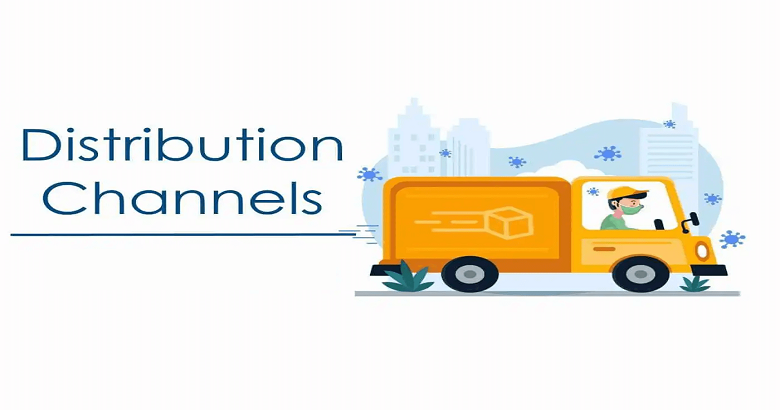Publishing a comic book is a dream for many artists and writers, but the journey from the initial idea to holding a printed comic in your hands can be complex. This guide will walk you through the steps to bring your comic book to life, from concept to publication.
Developing Your Concept
Brainstorming Ideas
Begin with a solid concept. Whether it’s a superhero saga, a slice-of-life story, or an epic fantasy, your idea should be unique and compelling. Spend time brainstorming and refining your core concept. Ask yourself:
- What is the main plot of my comic?
- Who are the protagonists and antagonists?
- What themes do I want to explore?
Creating Characters
Characters are the heart of any comic book. Develop detailed character profiles, including backgrounds, motivations, and physical appearances. Strong, well-rounded characters will engage your readers and drive your story forward.
Writing the Script
A script is essential for guiding both the writing and illustrating processes. It should include dialogue, descriptions of scenes, and panel breakdowns. There are various formats for comic scripts, but generally, they include:
- Page number
- Panel number
- Descriptions of the action
- Dialogue or captions
Illustrating Your Comic
Finding an Artist
You’ll need to find one if you are not an artist. Look for artists whose style matches your vision. You can find artists through:
- Online portfolios and social media
- Comic conventions
- Freelance websites
- Collaborating with the Artist
Communication is key. Ensure that both you and the artist understand the story, characters, and the overall tone of the comic. Provide clear instructions and be open to the artist’s input.
Creating Thumbnails and Layouts
Before diving into detailed illustrations, create thumbnail sketches and page layouts. Thumbnails are small, rough sketches that map out the entire comic. They help visualize the flow of your story and ensure the pacing works.
Penciling, Inking, and Coloring
Once thumbnails are approved, the artist will create detailed pencil sketches. These sketches are then inked to define the lines more clearly. Finally, the comic is colored. Each step requires careful attention to detail to ensure the final product is visually appealing.
Lettering
Lettering involves placing the text on the comic pages, including dialogue, captions, and sound effects. Good lettering is crucial for readability and enhancing the story’s mood. Many use software like Adobe Illustrator or specialized programs like Comic Life.
Preparing for Publication
Editing
Before publishing, thoroughly edit your comic. Check for consistency in the art, ensure the text is error-free, and that the story flows well. It can be helpful to get feedback from other creators or potential readers.
Formatting
Prepare your comic according to the specifications required by your chosen publishing method. This might include:
- Trim size: The final size of the printed comic.
- Bleed: Extending the art beyond the trim size to avoid white borders.
- Resolution: Typically, 300 DPI (dots per inch) for print quality.
ISBN and Copyright
Obtain an ISBN (International Standard Book Number) if you plan to sell your comic. This unique identifier is essential for distribution and sales tracking. Also, consider copyrighting your work to protect your intellectual property.
Choosing a Publishing Method
Self-Publishing
Self-publishing gives you complete control over your comic. You can use print-on-demand services like Amazon’s Kindle Direct Publishing (KDP) or IngramSpark, which allow you to print copies as needed. Pros of self-publishing include:
- Creative Control
- Higher profit margins
- Flexibility in distribution
However, self-publishing also means you’ll handle all aspects of marketing and distribution yourself.
Traditional Publishing
Traditional publishing involves submitting your comic to a publisher, who will handle printing, distribution, and marketing. This route can be more challenging due to the competitive nature of the industry, but it offers several advantages:
- Professional editing and design
- Established distribution networks
- Marketing support
Digital Publishing
Digital platforms like ComiXology, Webtoon, and Tapas allow you to publish your comic online. This method can be cost-effective and provides access to a global audience. Digital comics can be sold as standalone issues or released episodically. Benefits include:
- Lower production costs
- Immediate global distribution
- Interactive features (e.g., animations, sound effects)
Marketing and Distribution
Building an Online Presence
Create a website and social media profiles to promote your comic. Share behind-the-scenes content, character sketches, and updates to build a following. Engage with your audience regularly to foster a community around your work.
Attending Conventions
Comic conventions are excellent venues for promoting your comic. You can sell copies, network with other creators, and connect with fans. Consider creating promotional materials like posters, bookmarks, or buttons to attract attention.
Utilizing Crowdfunding
Use crowdfunding platforms like Kickstarter or Indiegogo to fund your comic book project. This helps you raise the necessary funds and creates a built-in audience eager to see your comic succeed. Successful crowdfunding campaigns often include:
- A compelling pitch video
- Detailed project description and goals
- Attractive rewards for backers (e.g., signed copies, exclusive art, merchandise)
Leveraging Social Media
Social media platforms are powerful tools for marketing your comic book. Here are some strategies:
- Instagram: Share images and short videos of your artwork, behind-the-scenes content, and snippets of your comic.
- Twitter: Engage with the comic book community, participate in relevant hashtags, and share updates on your progress.
- Facebook: Create a dedicated page for your comic where you can post longer updates, run ads, and interact with fans.
- YouTube: Start a channel to document your comic creation process, share tutorials, or host live Q&A sessions.
Distribution Channels
Online Marketplaces
Selling your comic through online marketplaces like Amazon, Etsy, or your website can reach a broad audience. Ensure you have high-quality images and detailed descriptions to attract buyers.
Local Comic Shops
Approach local comic book shops to carry your comic. Many shops are willing to support local creators and may offer consignment deals where they sell your comic and take a percentage of the sales.
Libraries and Schools
Consider donating copies to local libraries and schools. This will not only get your comic into readers’ hands but also build goodwill and can lead to future sales and speaking opportunities.
Digital Platforms
As mentioned earlier, platforms like ComiXology, Webtoon, and Tapas are excellent for digital distribution. They often have large, dedicated audiences looking for new content. Additionally, you can sell digital versions of your comic through your website or platforms like Gumroad.
Engaging with Your Audience
Hosting Events
Organize events such as launch parties, signing sessions, or workshops. These events can be held in person at local bookstores and comic shops or via platforms like Zoom or Discord.
Creating Newsletters
Build an email list to inform your audience about new releases, events, and behind-the-scenes content. Newsletters are a direct way to reach your fans and keep them engaged with your work.
Collecting Feedback
Encourage your readers to provide feedback on your comic. This can be done through surveys, social media interactions, or direct messages. Constructive feedback can help you improve your work and build a loyal fanbase.
Financial Considerations
Budgeting
Creating and publishing a comic book can be expensive. Budgeting for various expenses, including artist fees, printing costs, marketing, and distribution, is crucial. Consider creating a detailed financial plan to manage your resources effectively.
Monetizing Your Work
Beyond selling your comic, look for additional revenue streams such as:
- Merchandise: Create and sell merchandise like T-shirts, posters, or action figures based on your comic.
- Patreon: Offer exclusive content, early access to new issues, and other perks to supporters on Patreon.
- Workshops and Tutorials: Share your expertise through paid workshops, tutorials, or online courses.
Expanding Your Reach
Collaborations
Collaborate with other creators to expand your audience. Joint projects, guest artist contributions, or crossover events can attract new readers and provide fresh content for your existing fanbase.
Media Coverage
Contact comic book blogs, podcasts, and YouTube channels to seek media coverage. A well-written press release and professional media kit can help you get your comic featured in relevant publications and shows.
Awards and Competitions
Enter your comic into competitions and apply for awards. Winning or even being nominated can significantly boost your credibility and visibility in the industry.
Long-term Planning
Sequels and Spin-offs
Consider creating sequels, spin-offs, or related projects if your comic is successful. Expanding your universe can keep your audience engaged and provide new storytelling opportunities.
Licensing and Adaptations
Explore opportunities to license your comic for other media, such as television, film, or video games. This can be a lucrative way to reach a wider audience and generate additional revenue.
Continuous Learning
Stay updated with industry trends and continue honing your craft. Attend workshops, read industry publications, and network with other creators to improve your skills and knowledge.
Conclusion
Publishing a comic book is a rewarding but challenging endeavor. Following these steps and staying dedicated to your vision, you can successfully bring your comic book to life and share your stories with the world. Remember, persistence and passion are key. Keep creating, keep learning, and most importantly, enjoy the journey of bringing your comic book to fruition.
Frequently Asked Questions
1. How long does it take to publish a comic book?
Depending on complexity, it varies, but generally several months to a year or more.
2. Do I need prior art or writing experience?
No, passion and dedication are key, though experience can help.
3. What's the cost of publishing a comic book?
Varies based on artwork, printing, distribution, and marketing expenses.
4. Can I publish digitally, or in print the only option?
Both are options; digital offers global reach and lower costs, while print provides a tactile experience.
5. How do I protect my intellectual property rights?
Register your work with copyright offices and seek legal advice if collaborating or negotiating contracts.






